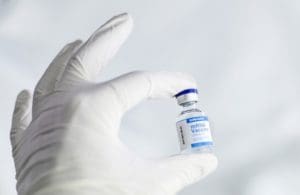
Image by Spencer Davis from Pixabay
In the U.S., more than 125 million people have been fully vaccinated against COVID-19. While most vaccine recipients tend to have relatively minor and fleeting adverse events from the shots, many people continue to worry about side effects.
According to a recent survey from the physician social network Sermo found that 72% of physicians reported that their patients continue to be concerned about vaccine side effects. Almost 30% of physicians surveyed have encountered patients who have skipped their second dose over adverse event concerns.
Scientific rigor and solid epidemiology are needed to improve our understanding of vaccine safety, according to Dr. Jan Bonhoeffer, a Switzerland-based expert on infectious diseases and vaccine safety who is the founder of the non-profit foundation Heart Based Medicine.
“We need to formulate the right questions to provide the data we need,” Bonhoeffer said.
Epidemiologists have made considerable strides over the past two decades in understanding safety signals associated with medical products. They can pull from hundreds of millions of electronic health records and analyze them.
“I would suspect that in the next six to 12 months, we’ll see a lot of real-life safety data coming out” for COVID-19 vaccines, Bonhoeffer said. “A lot of it will be signals for things like Bell’s palsy that came up in the clinical trials.”
When considering whether such adverse events are linked to authorized COVID-19 vaccines, an epidemiological tool known as a 2 x 2 table is indispensable for properly calculating the odds.
|
Disease |
No disease |
|
| Exposed |
a |
b |
| Unexposed |
c |
d |
When focusing on COVID-19 vaccine safety, vaccinated people are said to be “exposed” while the unvaccinated are “unexposed.” In the case of Bell’s palsy, patients with the condition would be positioned in cells “a” or “b” based on their vaccination status.
Calculating the relative risk requires the following calculation:
“I’d be surprised if Bell’s palsy is an issue with mRNA COVID-19 vaccines,” Bonhoeffer said.

Dr. Jan Bonhoeffer
A 2004 NEJM article was able to draw a link between Bell’s palsy and an inactivated intranasal influenza used in Switzerland in 2000 and 2001.
“Ever since then, Bell’s palsy has not been causally linked to vaccines,” Bonhoeffer said. The mechanism for how a vaccine would trigger Bell’s palsy is also not clear, he added. “But this is rare disease epidemiology, so let’s keep observing it,” Bonhoeffer said.
“If somebody has had Bell’s palsy in the past, I would not be concerned about the vaccines. Having Bell’s Palsy has never been a risk for having more Bell’s palsy or a serious event after immunizations for disease,” Bonhoeffer said.
It’s common for many people including medical experts who observe rare and unexplained diseases such as autism, narcolepsy, multiple sclerosis to speculate on what may cause them — especially if there is a seeming increase in those diseases.
“We all have this urge to causally associate,” Bonhoeffer said. “It takes discipline to say: ‘That’s a fantastic hypothesis. Let’s go test it.’”
“But it needs that 2 x 2 table. All of these observations are kind of ‘cell a’ data,” Bonhoeffer said. “Those who are exposed and those with the disease. And we’re not looking at the exposed without the disease and all the other fields. That’s really what it takes. And quite often, the signal disappears.”